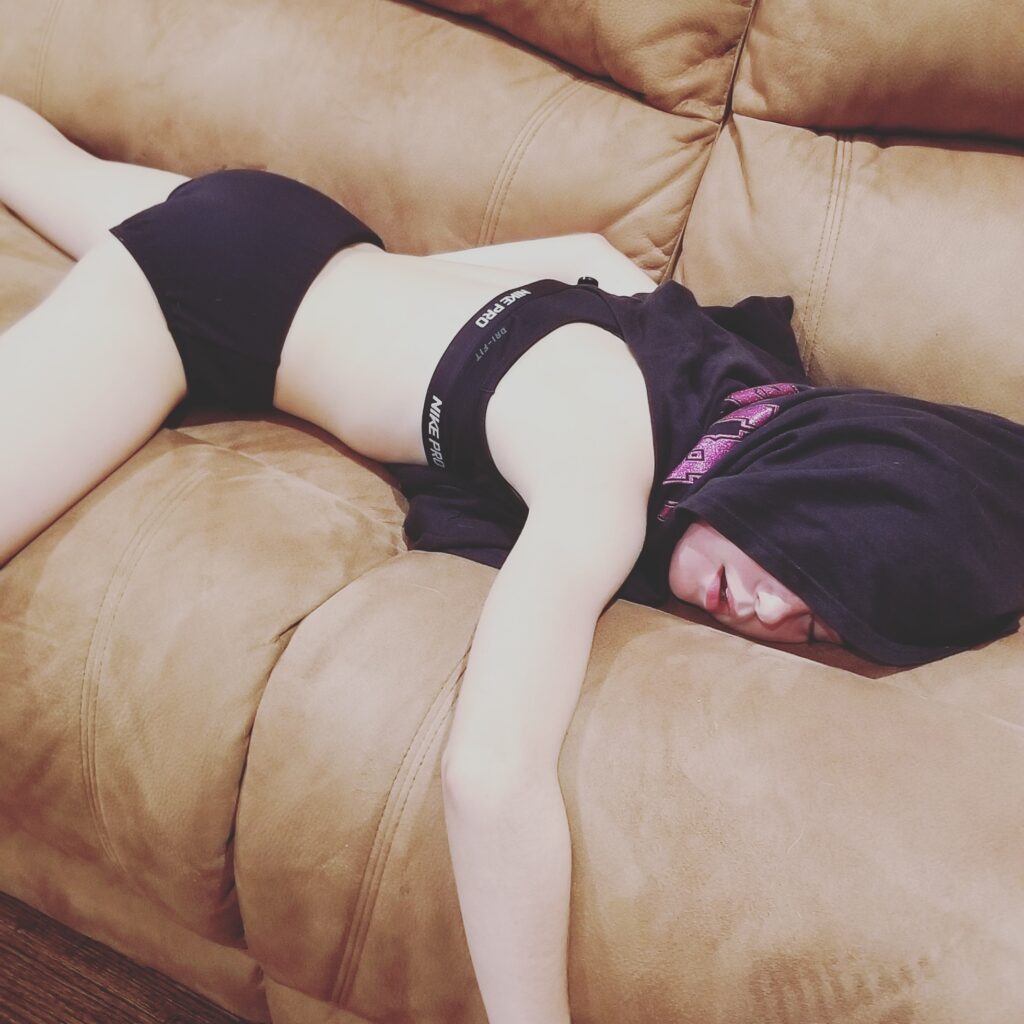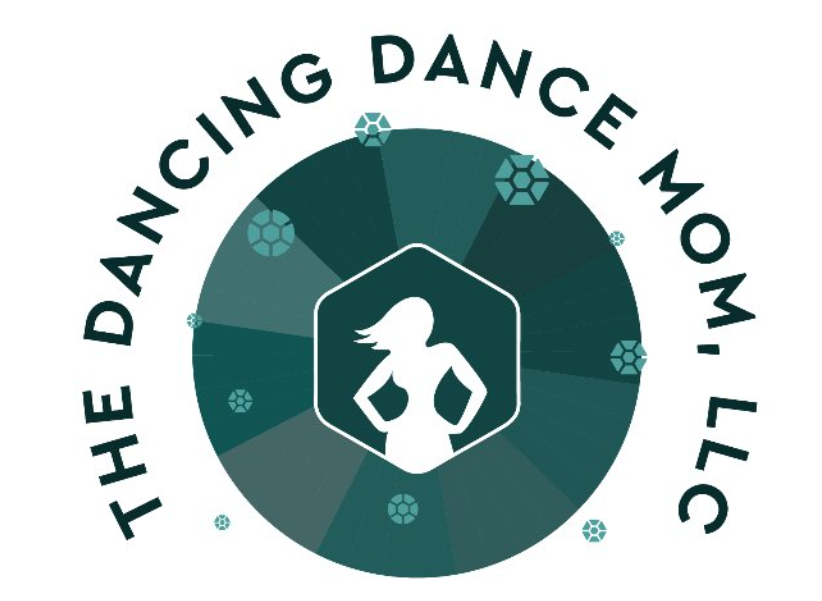It’s a proud day in the life of a dance family when the director makes an offer for your child to compete in a duo or trio! I remember opening the email that I received from our studio director, inviting Thing 1 and Thing 2 to participate in their first duo. I was so proud of my girls, and knew it marked a significant milestone in their dance careers. What I didn’t know (at the time) was the amount of work that would need to go into making it the best it could be, and how it might affect the dynamic between the two girls.

Why your dancer?
Studio owners and directors offer duos and trios to their dancers for several reasons.
- They might notice a unique chemistry between two or three particular dancers, and feel like a routine would be a fantastic way to showcase their personalities and abilities.
- A duo/trio might be a way to test the waters for possibly offering a solo to those dancers in the future. In this case, the duo/trio acts as a sort of experiment.
- Duos and trios are a great way to draw dancers out of their shells, and give them the confidence they need to really shine on stage (even in group numbers).
Whatever the case, eligible dancers will represent their studio in a spotlight number that will attract a good number of eyeballs. Most instructors would not put a child in such a position if they weren’t ready. So if your dancer has been offered this opportunity, congratulations! More than likely, it is well deserved.
More often than not, you can rely on the owners, directors, and teachers to accurately evaluate whether your child is ready for such a big step. If you have your doubts though, it makes sense to ask some questions of yourself (and to answer them as honestly as you can).
Confidence
Does your child have the confidence to take the stage when so much of the audience’s focus will be on him or her? Some kids would rather just stay out of the spotlight (and there is absolutely nothing wrong with that!). If you’re unsure, try to have a gentle but honest discussion with your dancer. Do they think they are ready, or could be ready by the time the first competition comes around? Assure them that it’s natural to be at least a little apprehensive when you’re venturing into new territory. If the level of anxiety inspires tears and/or panic, now might not be the right time. In the meantime, they can work on their confidence with these tips.
Resilience
All the world’s a stage, and that seems to be where most unfortunate mishaps occur (see Lauren’s experience in To Top It All Off, Part 1 and Part 2)! Be realistic with your dancer; it will not be as easy as putting on a little show in the living room for Grandma. Can they manage their nerves enough to take the stage when something doesn’t go exactly to plan?
During their first year of competing their solos, Thing 2 was in the middle of her lyrical routine when her music cut out. My heart dropped into my stomach, but my girl didn’t miss a beat; she kept dancing like a seasoned professional with nothing but the counts in her head (one of my proudest moments as a dance mom!). She even got a special award for keeping her composure, and wound up winning the title anyway! Just two routines before her, though, a little girl forgot her choreography and ran off stage crying. It has happened to the best of dancers, but knowing how to bounce back is a skill that is developed in the face of adversity. If this would overwhelm your child to the point of paralysis or panic, he/she may just not be ready yet.
Work Ethic

Dance moms and dads are usually willing to pony up quite a bit of money, but the cost of an optional number can be pretty substantial. Aside from the extra costume and entry fees, there are typically choreography and rehearsal fees. With all of that invested, dance parents want their child to make the most of the opportunity (understandably). If you were haggling with your son or daughter to put in practice time for regular instruction, having an additional routine right now might not be the smartest move. The dance school staff expects that the children in duos and trios will put in practice time outside the studio. If you foresee this as being a catalyst for arguments between you and your dancer, a duo/trio might not be a good fit at the moment.
Compatibility

No doubt, the dance studio staff has thought long and hard about who to match up together when they planned their duos and trios for the year. While two particular dancers might get along swimmingly in dance school, that dynamic may change once they leave the studio. If one dancer is especially bossy, her assertiveness may create resentment and hard feelings between them.
Another question of compatibility is how committed both (or all three) dancers are. If one is “all in,” but the others consider it to be more of a fun opportunity, that may create some friction. Judges and spectators might be able to detect the tension between them, and that negatively colors the performance. If one child always wants to practice and the other one just doesn’t care as much, the routine will suffer (and so will the dancers). The participating parents should have a conversation, apart from the dancers and staff, to discuss their expectations and determine whether or not they’re on the same page.
Logistics
Your dancer will be expected to get together with the other dancers in the duo/trio on their own time. If this would be a problem for your family, it might be best to politely decline the offer for now. It would simply be unfair to the others if your family couldn’t hold up your end of the commitment. But as we know, most dance parents are very accommodating and will offer to pick up, drop off, carpool, etc. to make it work. Brainstorm together about where and when these informal rehearsals can take place, eliciting the help of the studio owner or choreographer if you run into an issue. Some schools have open floor time, which may work for your group (or you can call around to area gyms and studios to ask if they would rent their space). In some cases, a family will have a large enough space in one of their homes for the kids to practice.
Oh Brother, Dear Sister

Dance teachers love siblings! They often choose a pair of siblings to perform a duo together; not only is there a natural bond between the dancers, but choosing siblings from one family eliminates many of the logistical issues that dancers from two separate families need to deal with (getting rides, working out a schedule, etc.).
However, having two sisters, two brothers, or a brother/sister pair working together can be both a blessing and a curse. If they don’t get along (at least to some degree) when the stakes are low, it isn’t very likely that they will when the stakes are high. Pressure tends to bring out the worst in us, so they may melt down more easily if the person they’re dancing with is as familiar as a sibling.
If your children are in a duo or trio together, have a frank discussion with them regarding your expectations. Make it clear that any disagreements are to be handled as if they are in the presence of their dance teacher, even when they are home. To lessen the likelihood that they’re squabbling will affect your home environment, be firm but supportive. At one point, I had to threaten my girls with scratching their duo if they didn’t learn to deal with each other better.
The Upper Hand
My daughters are identical twins, so much of their style and movements are already (nearly) perfectly matched. When they were seven, they were given their first duo. It was an acro routine with a sassy, high-energy vibe (Supermodel, inserted below). This year, they will have a moving lyrical duo with a deeply personal meaning. In both cases, one twin was a little more expert in the genre than the other. Keep an ear open while they’re practicing to make sure that the more proficient child is not lording over the other.
An Important Tip
Do yourself a favor – ask the studio staff to record the choreography on video. I speak from experience here; there were a few times when my girls would disagree about their counts, and with no knowledge of the routine myself, I could not say for sure who was right. This is a good strategy to use whether or not the dancers are related. Looking back at the video is a great strategy for learning their choreo anyway, and it may just spare you from having to officiate an argument (or twenty).
Keep It Positive
The truth is that, no matter how good they are, it is very unlikely that your dancer’s duo/trio will always place. Disappointment is part of the package, and when dealt with appropriately, can be a part of the learning experience. One thing you can do is plan special outings with the partners that are not at all dance-related (going out for ice cream after a rehearsal, a FaceTime session where they give a “tour” of their respective rooms, writing supportive letters to each other, trading good luck charms, working together on a craft that will become a keepsake to commemorate their dance, etc.). Keep it positive and light so all of the stakeholders can focus on the dancers’ growth and development. Regardless of the outcome, they should remember that this opportunity was an honor, and an important milestone in their dance career.

